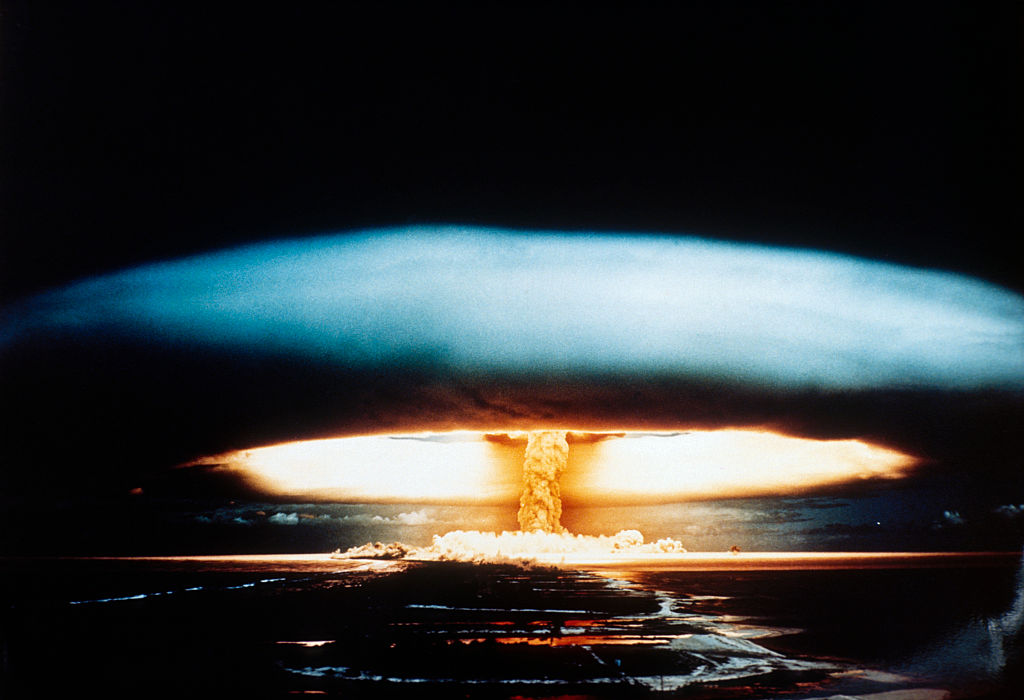
Preparations are already underway at the United Nations for the 2026 Review Conference of the Parties to the Treaty on the Non-Proliferation of Nuclear Weapons (NPT), which was originally signed in 1968. Many expect a contentious event. Some countries are having second thoughts about the principle of non-proliferation because they wonder if Russia would have invaded Ukraine in 2022 if the latter had kept the nuclear weapons it inherited from the Soviet Union. Such counterfactuals, in turn, have renewed others’ fears of nuclear proliferation.
These concerns are not new, of course. In my memoir, A Life in the American Century, I revisit an equally contentious period in the 1970s, when I was in charge of US President Jimmy Carter’s non-proliferation policy. Following the 1973 oil crisis, the conventional wisdom was that the world was running out of oil and needed to turn to nuclear energy. However, it was also widely—and wrongly—believed that the world was running out of uranium and therefore would have to rely instead on reprocessed plutonium (a byproduct of the uranium used in nuclear reactors).
According to some forecasts at the time, as many as 46 countries would be reprocessing plutonium by 1990. The problem, of course, was that plutonium is a weapons-usable material. A world awash in the trade of plutonium would be at much greater risk of nuclear proliferation and nuclear terrorism.
In 1974, India became the first country beyond the five listed in the NPT (China, France, Russia, the United Kingdom, and the US) to launch what it euphemistically called a ’peaceful nuclear explosion’. It used plutonium reprocessed from American and Canadian uranium, which had been provided on the condition that it would be used for peaceful purposes only. France then agreed to sell a plutonium-reprocessing plant to Pakistan, whose prime minister, Zulfikar Ali Bhutto, had said the country would eat grass before letting India develop a nuclear monopoly in South Asia. Meanwhile, in Latin America, Germany was selling a uranium-enrichment plant to Brazil, and Argentina was exploring its options for using plutonium. With other countries quietly doing the same, an incipient nuclear arms race was developing.
A decade earlier, US President John F. Kennedy had warned that the world would have 25 nuclear powers by the 1970s. Though the NPT was supposed to avert that scenario, it was beginning to look like his prognosis might come true. But Carter (who had experience as a nuclear engineer in the Navy) was determined to prevent this when he arrived in the White House.
For my part, I had recently served on a Ford Foundation and Mitre Corporation commission on nuclear energy and non-proliferation—which included multiple eventual members of the Carter administration. While many feared that the world was headed for a plutonium economy and the spread of nuclear weapons, the Ford-Mitre Report called this conventional wisdom into question and argued that the safest way to use nuclear energy was with an internationally safeguarded ‘once through’ fuel cycle that would leave the plutonium locked up in the stored spent fuel.
Carter accepted our report when we met with him in the White House. But our recommendation was wildly unpopular with the American nuclear industry and with senators from western and southern states whose facilities would be closed. It was also anathema to allies such as France, Germany, and Japan, whose energy strategies (and exports) would be undercut.
My job, when I entered the administration, was to implement Carter’s policy, which resulted in heavy criticism from all the groups mentioned above. As an academic, it was a new experience to see my name in critical editorials and headlines, or to be hauled before a Senate committee for a hostile grilling. When you are constantly being told you’re wrong, it is sometimes hard to remember that you might be right!
The question was how to break through the conventional wisdom that was driving the world toward a plutonium economy. We invited other countries to join an international nuclear fuel cycle evaluation (INFCE) so that we could examine subjects such as the availability of uranium supplies and the ability to safeguard plutonium. The INFCE was launched at a large conference in Washington DC, in 1977, and its committees and working groups then met for the next two years. It thus played a central role in Carter’s strategy to buy time, to slow things down, and to develop transnational webs of knowledge about the true costs and alternatives to what the nuclear industry regarded as the immutable nature of the nuclear-fuel cycle.
Over those two years, the INFCE did much to advance these objectives. The major nuclear-supplier countries met in London in 1977, and agreed on guidelines to ’exercise restraint’ in the export of sensitive nuclear facilities. Soon thereafter, France and Germany suspended their exports of controversial facilities.
Where does nuclear non-proliferation stand today? The good news is that there are only nine countries with nuclear weapons, compared to the two dozen that Kennedy predicted by the 1970s. Moreover, the NPT has 189 parties and is one of the few arms-control agreements that the major powers still observe. The Nuclear Suppliers Group guidelines still hold, and while a few countries engage in reprocessing, the world is not hurtling toward a fragile plutonium economy.
The bad news is that North Korea has abandoned its commitments under the NPT. It has achieved six nuclear explosions since 2006, and Kim Jong-un frequently rattles his nuclear saber in a destabilising manner. In the Middle East, Iran has developed facilities for enriching weapons-grade uranium, and it is fast approaching the threshold of becoming the 10th nuclear-weapons state. Many observers fear that if it does so, it may precipitate a proliferation cascade across the region, with Saudi Arabia quickly following suit.
These are worrying developments. As my experience in the 1970s shows, it is when conditions seem especially dire that efforts to slow the spread of nuclear weapons must be maintained. Otherwise, the world will become a far more dangerous place.

